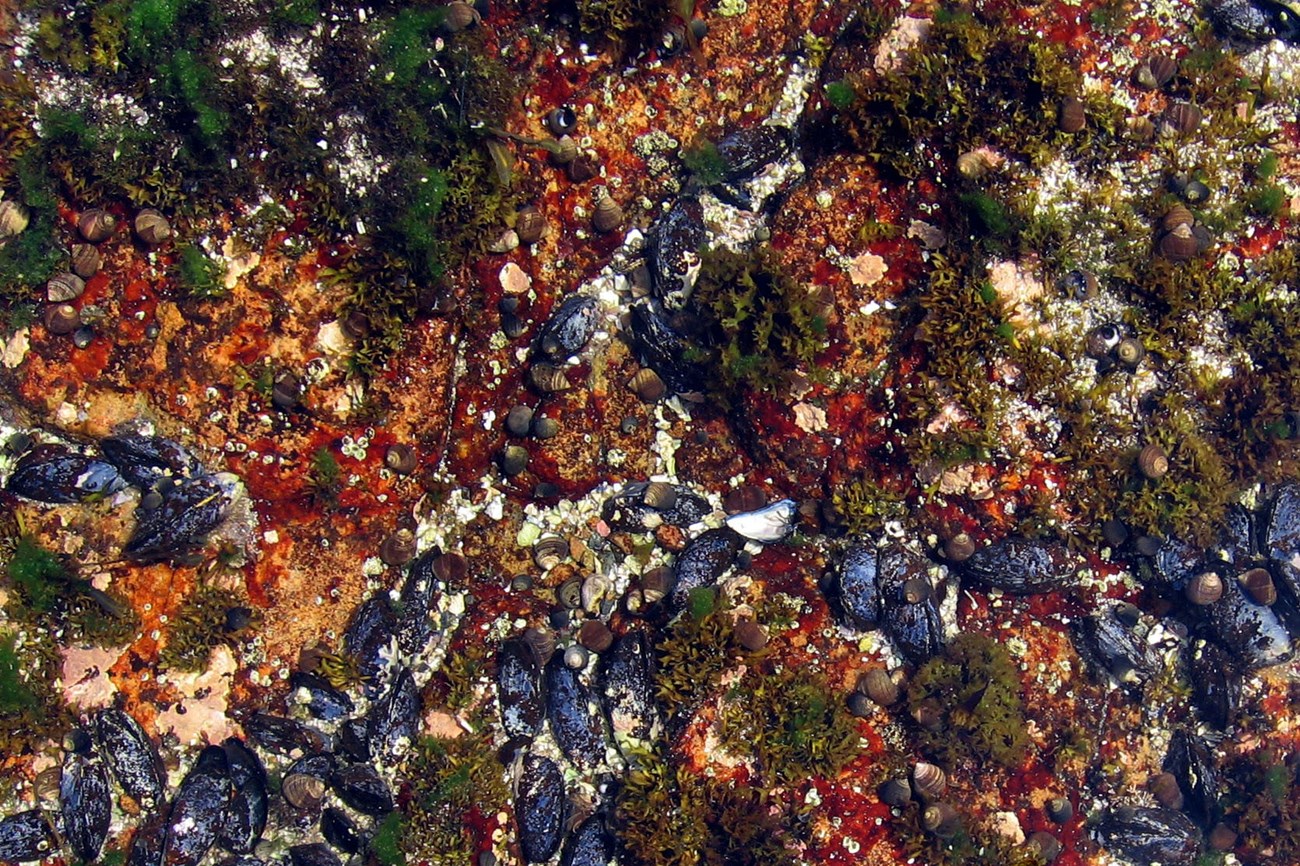
NPS Photo The rocky shoreline of Acadia National Park is a stunning landscape where land and seawater meet. The tides rise and fall twice daily. Something is also moving at the seashore, crashing waves, crawling crabs, curious seals, and an array of marine wildlife living together in a diverse neighborhood. 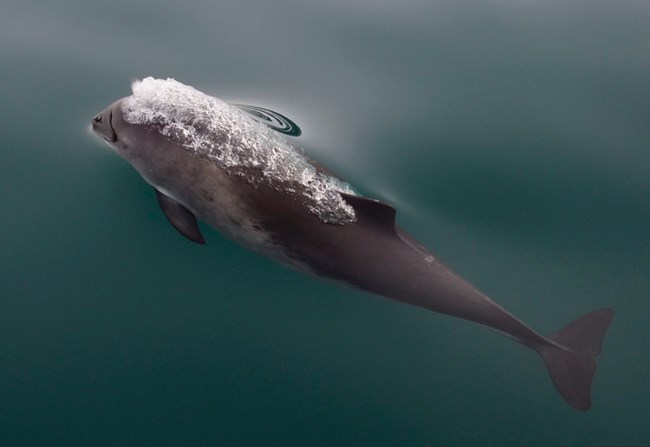
NPS Photo Marine MammalsHarbor porpoise are shy creatures, but can be spotted along the coast. They have a small, but solid body and blunt beak but the most easily seen characteristic is their triangular shaped dorsal fin that is slightly sloped and curved. Harbor porpoises travel in groups up to 10 and occasionally come close to boats since they swim around and underneath them. They mainly eat schooling fish, but occasionally they will eat squid or octopus. 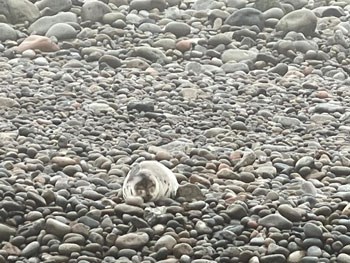
SealsSeals are common along the shores of Maine, gray and harbor seals being the most common. Identifying the difference between them is displayed by their head shape. Harbor seals have a dog like shaped head with V shaped nostrils, while gray seals have more horse like heads with parallel nostrils. Seals are curious creatures and them often lift themselves up out of the water to observe. Often females will leave their pups alone on shore to feed herself. Although it may seem a seal pup needs rescuing, this is a natural occurrence and should be left alone and observed from afar as to not scare off the returning mother. What to do if you spot a seal
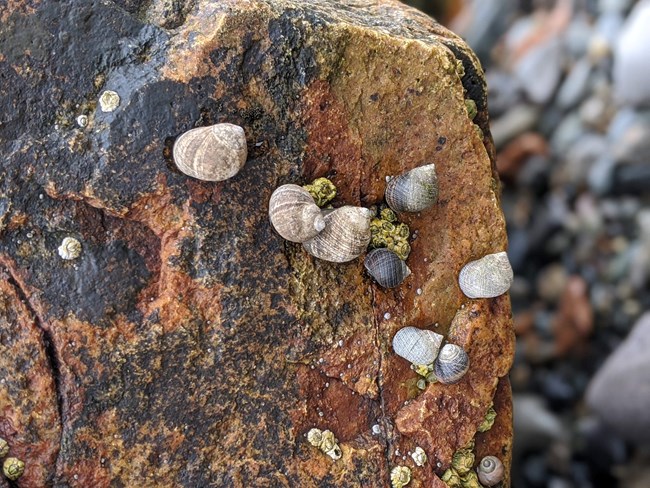
NPS Photo/Julie Flores Marine InvertebratesMarine invertebrates, animals without backbones, live on the part of the shore that is exposed during low tide and submerged during high tide and must survive both in and out of seawater. Different organisms inhabit certain intertidal zones. Their hard exteriors prove that shore wildlife must survive harsh conditions when exposed to sun, wind, and waves. 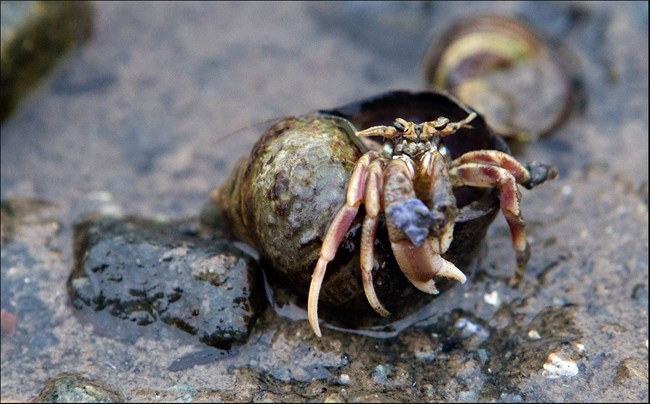
Photo by Ashley L. Conti, Friends of Acadia, NPS CrustaceansCrustaceans have jointed legs and a hard exterior called an exoskeleton covering their soft bodies. Commonly seen crustaceans are barnacles and crabs. Nothing in the world can hang on like a barnacle who live inside volcano shaped shells. When they are young, they swim freely, then eventually cement themselves to a rock to settle, adding minerals to its shell plates overtime to grow. They feed by extending shrimp like legs out of its opening to feed on tiny animals and plants floating in water. EchinodermsSea stars are boneless echinoderms; spiny skinned animals who depend of their tough skin, made up of calcium carbonate, and plates for protection like a coat of armor. They use their rubbery tube feet to move around. Sea stars also use their feet to collect food, for example, pulling open mussels. Related Content |
Last updated: April 6, 2022
